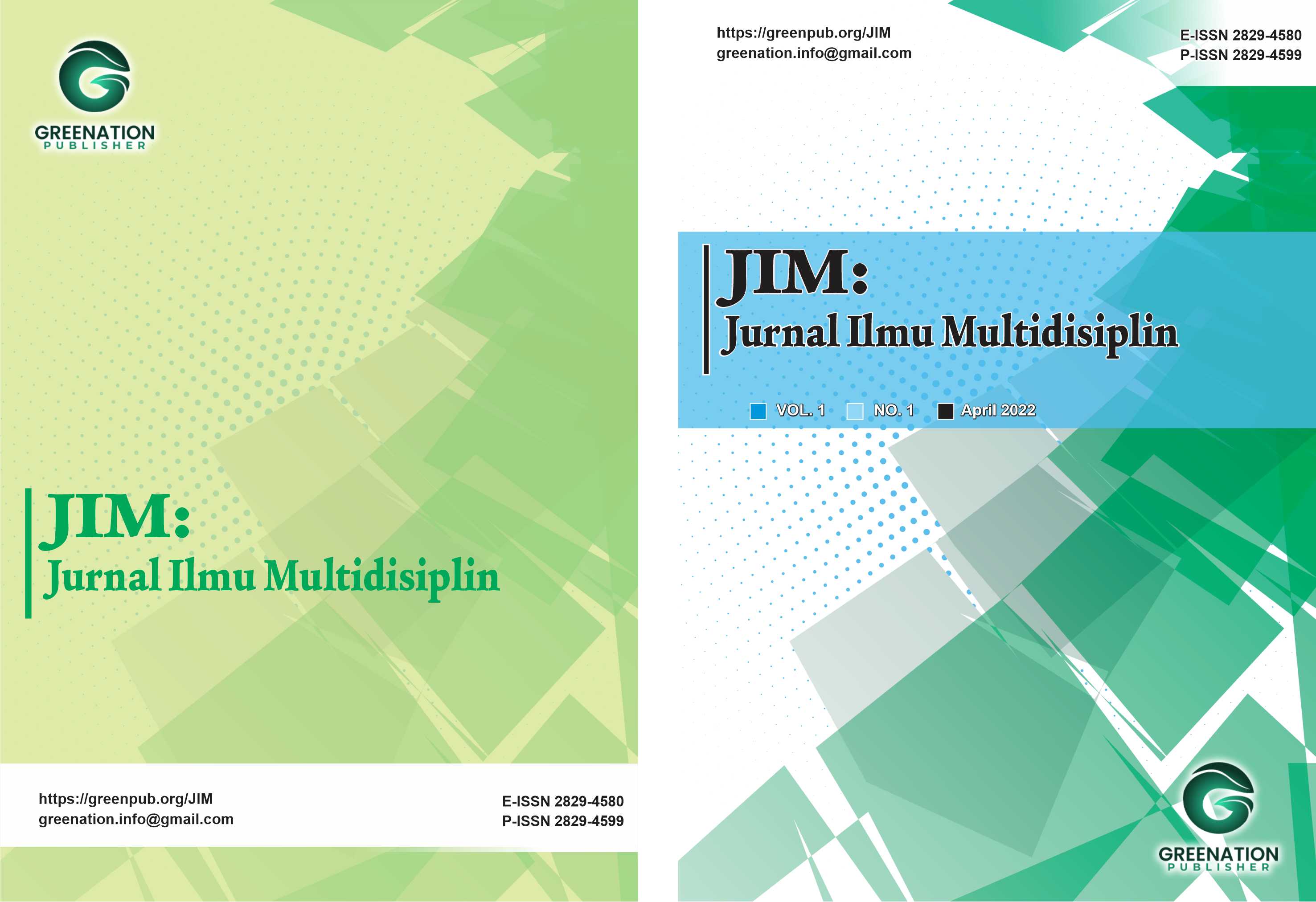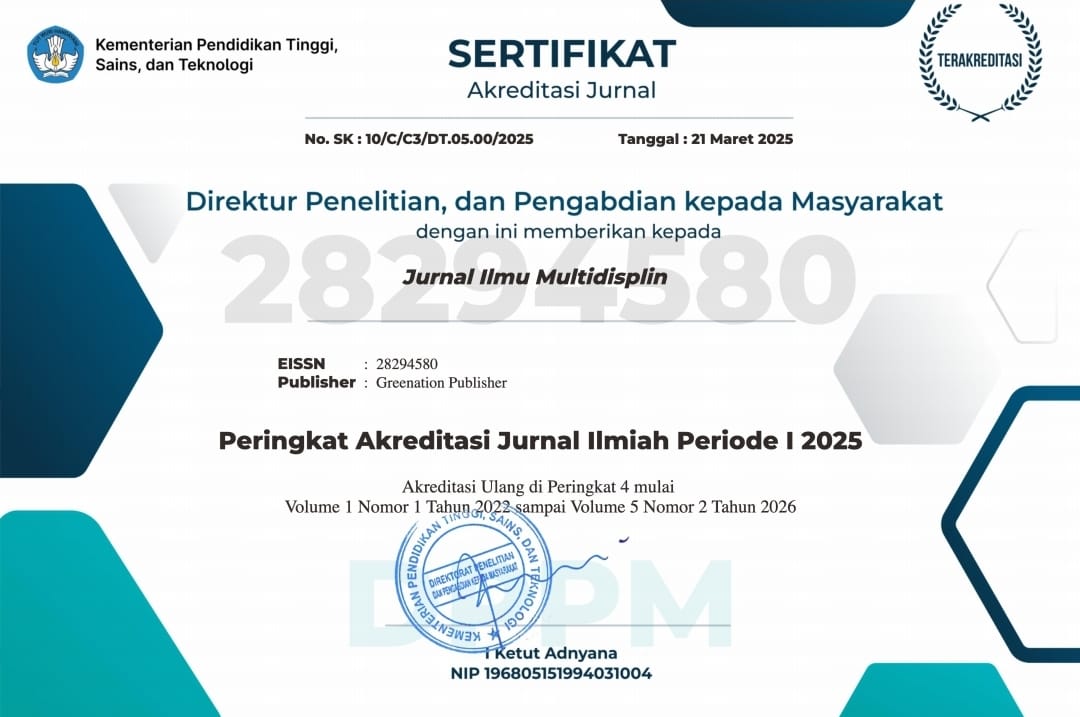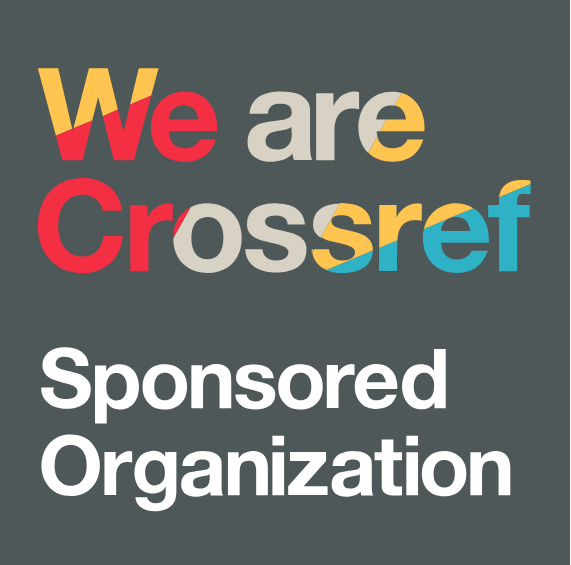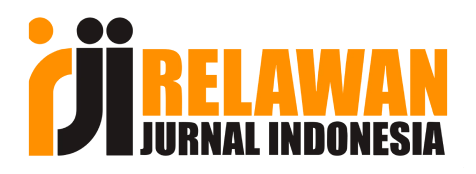Hubungan Time Pressure Flash Sale dengan Perilaku Pembelian Warga Jakarta: Fokus pada Public Self-Consciousness, Impulsive Buying, dan Post-Purchase Regret di E-Commerce Indonesia
DOI:
https://doi.org/10.38035/jim.v4i2.905Keywords:
Flash Sale, Post-Purchase Regret, Public Self-Consciousness, Impulsive BuyingAbstract
Tulisan ini mengeksplorasi hubungan antara public self-consciousness (kesadaran diri publik), post-purchase regret (penyesalan pasca-pembelian) saat terjadi flash sale di e-commerce. Flash sale dengan waktu yang terbatas telah menjadi strategi promosi umum dalam e-commerce, termasuk di Indonesia, pasar e-commerce yang potensial dengan pertumbuhan signifikan. Pertama, efek kesadaran diri publik terhadap kecenderungan pembelian impulsif konsumen dan penyesalan pasca-pembelian dianalisis. Kedua, penelitian ini melihat apakah hasil studi sebelumnya di China, di mana tekanan waktu berpengaruh positif terhadap hubungan antara kesadaran diri publik, kecenderungan pembelian impulsif, dan penyesalan pasca-pembelian juga terjadi di konsumen Indonesia. Data dikumpulkan melalui survei online anonim terhadap 152 pembeli daring dan dianalisis secara empiris, termasuk uji validitas dan ANOVA. Hasilnya memberikan kontribusi praktis dan teoritis terhadap model yang ada serta menunjukkan bukti empiris adanya hubungan positif antara kesadaran diri publik dan pembelian impulsif, antara kesadaran diri publik dan penyesalan pasca-pembelian, serta antara pembelian impulsif dan penyesalan pasca-pembelian.
References
Adwan, A.S., Debei, M.M., & Dwivedi, Y.K. (2022). E-commerce in high uncertainty avoidance cultures: The driving forces of repurchase and word-of-mouth intentions. Technology in Society, 71, 102083. https://doi.org/10.1016/j.techsoc.2022.102083
APJII. (2024, February 7). Jumlah Pengguna Internet Indonesia Tembus 221 Juta Orang. Retrieved October 12, 2024, from https://apjii.or.id/berita/d/apjii-jumlah-pengguna-internet-indonesia-tembus-221-juta-orang
Badan Pusat Statistik Provinsi DKI Jakarta. (2024, April 5). Jumlah Penduduk Menurut Kabupaten/Kota di Provinsi DKI Jakarta. Retrieved October 13, 2024, from https://jakarta.bps.go.id/id/statistics-table/2/MTI3MCMy/jumlah-penduduk-menurut-kabupaten-kota-di-provinsi-dki-jakarta-.html
Badan Pusat Statistik Provinsi DKI Jakarta. (2024, July 9). Persentase Penduduk Berumur 5 Tahun ke Atas yang Mengakses Internet (Termasuk Facebook, Twitter, Youtube, Instagram, Whatsapp) dalam 3 Bulan Terakhir menurut Kabupaten/Kota dan Jenis Kelamin di Provinsi DKI Jakarta. Retrieved October 13, 2024, from https://jakarta.bps.go.id/id/statistics-table/2/MTEyNCMy/persentase-penduduk-berumur-5-tahun-ke-atas-yang-mengakses-internet--termasuk-facebook--twitter--youtube--instagram--whatsapp--dalam-3-bulan-terakhir-menurut-kabupaten-kota-dan-jenis-kelamin-di-provinsi-dki-jakarta.html
Badan Pusat Statistik. (2023). Statistik eCommerce 2022/2023. In Statistik eCommerce 2022/2023 (06300.2314). Retrieved October 13, 2024, from https://www.bps.go.id/id/publication/2023/09/18/f3b02f2b6706e104ea9d5b74/statistik-ecommerce-2022-2023.html
Barta, S., Gurrea, R., & Flavián, C. (2023). Consequences of consumer regret with online shopping. Journal of Retailing and Consumer Services, 73, 103332. https://doi.org/10.1016/j.jretconser.2023.103332
Chan, E. Y. (2024). Consumer Behavior in Practice: Strategic Insights for the Modern Marketer. Switzerland: Palgrave Macmillan Cham.
Cui, Y., Liu, Y., & Gu, M. (2022). Investigating the key drivers of impulsive buying behavior in live streaming. Journal of Global Information Management, 30(1), 1-18. https://doi.org/10.4018/jgim.314226
Elida, T., Rahardjo, W., & Raharjo, A. (2024). Impulse Buying: How Generation Z's Enjoyment of Shopping Affects Their Fashion Buys. Economics and Business Quarterly Reviews, 7(2), 96-107. https://doi.org/10.31014/aior.1992.07.02.579
Fenigstein, A., Scheier, M. F., & Buss, A. H. (1975). Public and private self-consciousness: Assessment and theory. Journal of Consulting and Clinical Psychology, 43(4), 522–527. https://doi.org/10.1037/h0076760
Gabler, C. B., Myles Landers, V., & Reynolds, K. E. (2017). Purchase decision regret: Negative consequences of the Steadily Increasing Discount strategy. Journal of Business Research, 76, 201–208. https://doi.org/10.1016/j.jbusres.2017.01.002
GlobalData. (2024, May 8). Indonesia e-commerce payments to surge by 15.5% in 2024, reveals GlobalData. Retrieved October 13, 2024, from https://www.globaldata.com/media/banking/indonesia-e-commerce-payments-to-surge-by-15-5-in-2024-reveals-globaldata/
Godinho, S., Prada, M., & Garrido, M. V. (2016). Under Pressure: An Integrative Perspective of Time Pressure Impact on Consumer Decision-Making. Journal of International Consumer Marketing, 28(4), 251–273. https://doi.org/10.1080/08961530.2016.1148654
Grigsby, J., Jewell, R., & Campbell, C. (2021). Have your cake and eat it too: How invoking post-purchase hyperopia mitigates impulse purchase regret. Marketing Letters, 32, 75-89. https://doi.org/10.1007/s11002-020-09536-6
Gulfraz, M. B., Sufyan, M., Mustak, M., Salminen, J., & Srivastava, D. K. (2022). Understanding the impact of online customers’ shopping experience on online impulsive buying: A study on two leading E-commerce platforms. Journal of Retailing and Consumer Services, 68, 103000. https://doi.org/10.1016/j.jretconser.2022.103000
Hammond, J. S., Keeney, R. L., & Raiffa, H. (2015). Smart Choices: A Practical Guide to Making Better Decisions. Harvard Business Review Press.
Helmefalk, M., & Hultén, B. (2017). Multi-sensory congruent cues in designing retail store atmosphere: Effects on shoppers’ emotions and purchase behavior. Journal of Retailing and Consumer Services, 38, 1–11. https://doi.org/10.1016/j.jretconser.2017.04.007
Karbasivar, A., & Yarahmadi, H. (2011). Evaluating effective factors on consumer impulse buying behavior. Asian Journal of Business Management Studies, 2(4), 174-181. http://repository.wima.ac.id/5157/6/LAMPIRAN.pdf
Lamis, S. F., Handayani, P. W., & Fitriani, W. R. (2022). Impulse buying during flash sales in the online marketplace. Cogent Business & Management, 9(1). https://doi.org/10.1080/23311975.2022.2068402
Le, T.Q., Wu, W.Y., Liao, Y.K., & Phung, T.T.T. (2022). The Extended S-O-R Model Investigating Consumer Impulse Buying Behavior in Online Shopping: A Meta-Analysis. Journal of Distribution Science, 20(2), 1-9. https://koreascience.kr/article/JAKO202204554966151.page
Lee, J., & Hong, I. B. (2021). The Influence of Situational Constraints on Consumers’ Evaluation and Use of Online Reviews: A Heuristic-Systematic Model Perspective. Journal of Theoretical and Applied Electronic Commerce Research, 16(5), 1517–1536. https://doi.org/10.3390/jtaer16050085
Lee, J., Baek, H., Oh, E., Kim, J., & Ko, Y. (2024). Development and validation of the self-consciousness type scale. Frontiers in Psychology, 15. https://doi.org/10.3389/fpsyg.2024.1362324
Lee, S., & Workman, J. (2020). How Do Face Consciousness and Public Self-Consciousness Affect Consumer Decision-Making? Journal of Open Innovation Technology Market and Complexity, 6(4), 144. https://doi.org/10.3390/joitmc6040144
Liu, X., Zhou, Y. W., Shen, Y., Ge, C., & Jiang, J. (2021). Zooming in the impacts of merchants’ participation in transformation from online flash sale to mixed sale e-commerce platform. Information and Management, 58(2), 103–409. https://doi.org/10.1016/j.im.2020.103409
Lv, X., Zhang, R., Su, Y., & Yang, Y. (2022). Exploring how live streaming affects immediate buying behavior and continuous watching intention: A multigroup analysis. Journal of Travel Tourism Marketing, 39(1), 109-135. https://doi.org/10.1080/10548408.2022.2052227
Marjerison, R. K., Hu, J., & Wang, H. (2022). The Effect of Time-Limited Promotion on E-Consumers’ Public Self-Consciousness and Purchase Behavior. Sustainability, 14(23), 16087. https://doi.org/10.3390/su142316087
McKinsey & Company. (2018, August). The digital archipelago: How online commerce is driving Indonesia’s economic development. Retrieved October 13, 2024, from https://www.mckinsey.com/spContent/digital_archipelago/index.html
Mittal, S., Sondhi, N., & Chawla, D. (2018). Process of Impulse Buying: A Qualitative Exploration. Global Business Review, 19(1), 131–146. https://doi.org/10.1177/0972150917713368
Mohan, G., Sivakumaran, B., & Sharma, P. (2013). Impact of store environment on impulse buying behavior. European Journal of Marketing, 47(10), 1711-1732. https://doi.org/10.1108/ejm-03-2011-0110
Neuman, W. L. (2014). Social Research Methods: Qualitative and Quantitative Approaches (Seventh Edition). Pearson Education Limited.
Nigam, A., Dewani, P. P., & Behl, A. (2020). Exploring deal of the day: An e-commerce strategy. Benchmarking: An International Journal, 27(10), 2807–2830. https://doi.org/10.1108/BIJ-03-2020-0129
Park, J., & Hill, W. T. (2018). Exploring the role of justification and cognitive effort exertion on post-purchase regret in online shopping. Computers in Human Behavior, 83, 235–242. https://doi.org/10.1016/j.chb.2018.01.036
Qu, Y., Khan, J., Su, Y., Tong, J., & Zhao, S. (2023). Impulse buying tendency in live-stream commerce: The role of viewing frequency and anticipated emotions influencing scarcity-induced purchase decision. Journal of Retailing and Consumer Services, 75, 103534. https://doi.org/10.1016/j.jretconser.2023.103534
Scott-Parker, B. (2017). Emotions, behaviour, and the adolescent driver: A literature review. Transportation Research Part F Traffic Psychology and Behaviour, 50, 1–37. https://doi.org/10.1016/j.trf.2017.06.019
Sebastian, O. (2021). Distinguishing three effects of time pressure on risk-taking: Choice consistency, risk preference, and strategy selection. Journal of Behavioral Decision Making, 34, 541-554. https://doi.org/10.1002/bdm.2228
Shafira, M. H. (2024, January 17). BI: Transaksi di e-Commerce Indonesia Rp 453,75 Triliun pada 2023. investor.id. Retrieved October 13, 2024, from https://investor.id/business/351311/bi-transaksi-diecommerceindonesia-rp-45375-triliun-pada-2023
Sharma, P., Roy, R., & Rabbanee, F. K. (2020). Interactive effects of situational and enduring involvement with perceived crowding and time pressure in pay-what-you-want (PWYW) pricing. Journal of Business Research, 109, 88–100. https://doi.org/10.1016/j.jbusres.2019.11.078
Souca, M. L. (2014). Customer Dissatisfaction and Delight: Completely Different Concepts, or Part of a Satisfaction Continuum? Management and Marketing, 9(1), 75.
Statista. (2024, August 23). Biggest e-commerce websites in Indonesia in 2024, by monthly traffic. https://www.statista.com/statistics/869700/indonesia-top-10-e-commerce-site
Statista. (2024, August 26). Global revenue of the e-commerce market 2023, by country. http://www.statista.com/statistics/1283912/global-revenue-of-the-e-commerce-market-country
Tang, J., Yang, F., & Yang, T. (2023). Perceived uncertainty and switching intention on e-commerce platforms: The moderating role of usage habit. Electronic Commerce Research and Applications, 61, 101302. https://doi.org/10.1016/j.elerap.2023.101302
Tarka, P., Kukar-Kinney, M., & Harnish, R. J. (2021). Consumers’ personality and compulsive buying behavior: The role of hedonistic shopping experiences and gender in mediating-moderating relationships. Journal of Retailing and Consumer Services, 64, 102802. https://doi.org/10.1016/j.jretconser.2021.102802
Teh, M., Kalidas, V., & Zeeshan, M. (2014). Personality as a moderator of SOR mode. Review of Integrative Business and Economics Research, 3(2), 67-75. http://sibresearch.org/uploads/2/7/9/9/2799227/riber_b14-047_67-76.pdf
Tsiros, M., & Mittal, V. (2000). Regret: A model of its antecedents and consequences in consumer decision making. Journal of Consumer Research, 26(4), 401-417. https://doi.org/10.1086/209571
Xu, Y. (2008), "The influence of public self?consciousness and materialism on young consumers' compulsive buying". Young Consumers, Vol. 9 No. 1, pp. 37-48. https://doi.org/10.1108/17473610810857309
Yin, C.-C., Hsieh, Y.-C., Chiu, H.-C. and Yu, J.-L. (2021), "(Dis)satisfied with your choices? How to align online consumer’s self-awareness, time pressure and self-consciousness". European Journal of Marketing, Vol. 55 No. 8, pp. 2367-2388. https://doi.org/10.1108/EJM-03-2020-0187
Zhang, M., Cheng, T., & Du, J. (2018). Advance selling of new products to strategic consumers on flash sale platforms. International Journal of Logistics Research and Applications, 21(3), 318–331. https://doi.org/10.1080/13675567.2018.1454416
Zhang, N. (2023). Product presentation in the live-streaming context: The effect of consumer perceived product value and time pressure on consumer's purchase intention. Frontiers in Psychology, 14(2), 155-175. https://doi.org/10.3389/fpsyg.2023.1124675
Zhang, Y., Zhang, T., & Yan, X. (2024). Understanding impulse buying in short video live E-commerce: The perspective of consumer vulnerability and product type. Journal of Retailing and Consumer Services, 79, 103853. https://doi.org/10.1016/j.jretconser.2024.103853
Downloads
Published
How to Cite
Issue
Section
License
Copyright (c) 2025 Zahwa Salsabilla, M. Rizky Nugraha, Maria Theresia Efika Rosemarie, Devina Dhea Pabundu, Nourman Syahril L

This work is licensed under a Creative Commons Attribution 4.0 International License.
You are free to:
- Share— copy and redistribute the material in any medium or format
- Adapt— remix, transform, and build upon the material for any purpose, even commercially.
The licensor cannot revoke these freedoms as long as you follow the license terms.
Under the following terms:
- Attribution— You must give appropriate credit, provide a link to the license, and indicate if changes were made. You may do so in any reasonable manner, but not in any way that suggests the licensor endorses you or your use.
- No additional restrictions— You may not apply legal terms or technological measures that legally restrict others from doing anything the license permits.
Notices:
- You do not have to comply with the license for elements of the material in the public domain or where your use is permitted by an applicable exception or limitation.
- No warranties are given. The license may not give you all of the permissions necessary for your intended use. For example, other rights such as publicity, privacy, or moral rightsmay limit how you use the material.




























